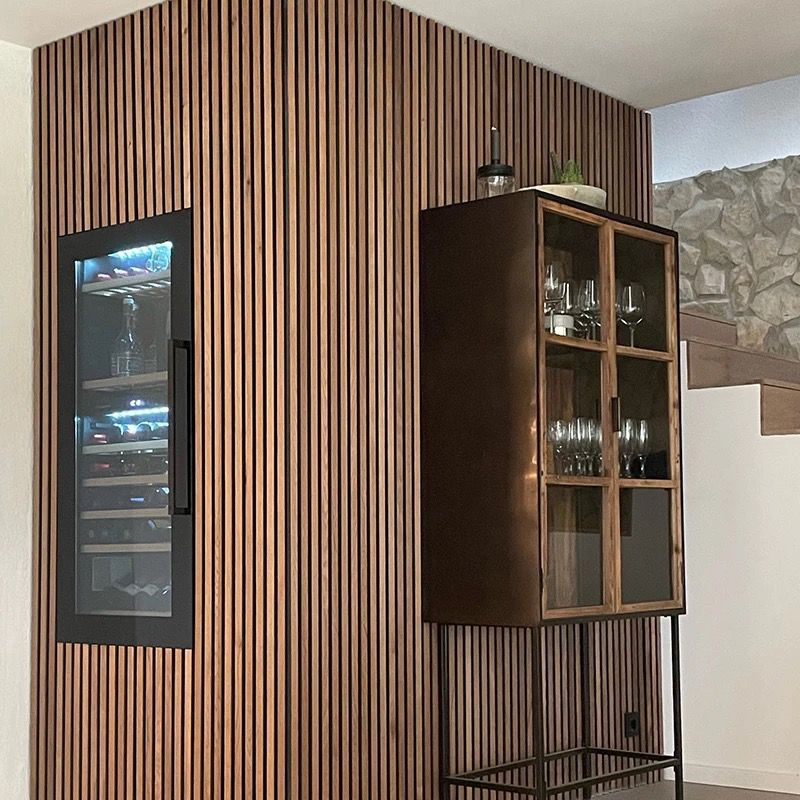Wood paneling can give a home a classic, rustic, or vintage charm, but over time, it may start to look outdated or clash with modern decor. Painting over wood paneling is a practical way to refresh a space without removing the paneling itself. In this article, we’ll explore the how and why of painting over wood paneling, offering step-by-step guidance and practical tips to ensure your project is a success.
Why Paint Over Wood Paneling?
Painting over wood paneling offers several benefits that make it a popular home improvement option:
- Modernizes the Look: Painting can transform dark, dated paneling into a lighter, more contemporary feature.
- Cost-Effective: Replacing wood paneling can be expensive. Painting is a budget-friendly alternative.
- Increases Home Value: Updated interiors can make a home more appealing to potential buyers.
- Customizable: You can choose any color to match your existing decor, making the space more cohesive.
By updating the look of your paneling with paint, you can create a brighter, more inviting environment that reflects your style without breaking the bank.
Preparing for Painting Over Wood Paneling
Proper preparation is essential for achieving a smooth, long-lasting finish. Follow these steps to get started:
- Clean the Paneling: Dust and dirt can prevent paint from adhering properly. Use a mild soap and water solution to wipe down the paneling, and let it dry completely.
- Fill in Gaps and Holes: Use wood filler to patch any cracks, holes, or imperfections. Once dry, sand the areas to create a smooth surface.
- Sand the Surface: Lightly sand the entire surface of the paneling with fine-grit sandpaper (120-150 grit) to help the primer adhere better. Be sure to wipe away dust with a damp cloth afterward.
- Apply Primer: Choose a high-quality stain-blocking primer and apply it evenly over the paneling. This step is crucial for preventing the wood’s natural oils from bleeding through the paint.
Choosing the Right Paint and Primer
Not all paints and primers are created equal, and choosing the right ones will ensure a beautiful, durable result.
Primer: Opt for an oil-based or latex stain-blocking primer. These primers seal the wood effectively and create a strong base for the paint.
Paint: Use high-quality latex paint with a satin or semi-gloss finish for best results. These finishes are easy to clean and provide a subtle sheen that highlights the paneling’s texture.
Pro Tip: If your paneling has deep grooves, consider using a paintable caulk to fill them in before priming for a smoother final appearance.
Step-by-Step Guide to Painting Over Wood Paneling
Here’s a detailed breakdown of the process:
- Gather Your Materials:
- Primer (stain-blocking)
- High-quality paint (latex)
- Paintbrushes and rollers
- Fine-grit sandpaper
- Wood filler
- Painter’s tape
- Drop cloths
- Protect Your Space:
- Lay down drop cloths to catch drips.
- Use painter’s tape to mask off areas like baseboards and adjacent walls.
- Prime the Paneling:
- Apply primer evenly, working in small sections. Use a roller for larger areas and a brush for corners and edges.
- Let the primer dry according to the manufacturer’s instructions (usually 24 hours).
- Apply the Paint:
- Use a roller for even coverage and a brush to reach detailed areas.
- Apply two coats of paint, allowing each coat to dry completely before applying the next.
- Finishing Touches:
- Once the final coat is dry, remove painter’s tape carefully.
- Inspect for any missed spots and touch up as needed.
Tips for Best Results
- Test the Color: Before painting the entire wall, test your chosen color on a small area to ensure it complements your space.
- Use Quality Tools: Investing in good brushes and rollers can make a significant difference in the final outcome.
- Ventilation Matters: Keep windows open or use fans to ensure proper ventilation during painting.
FAQs About Painting Over Wood Paneling
-
Can I skip priming and just paint directly over wood paneling?
No, primer is essential to prevent stains and ensure the paint adheres properly.
-
How long does it take to paint over wood paneling?
Depending on drying times and preparation, expect the project to take 2-3 days from start to finish.
-
What type of paint finish is best for wood paneling?
A satin or semi-gloss finish is recommended as it provides durability and highlights the wood’s texture.
-
Do I need to sand the paneling before painting?
Yes, sanding helps the primer and paint adhere better to the paneling.
-
Can I paint over laminated or faux wood paneling?
Yes, but you need to ensure it’s clean and primed with a suitable primer designed for slick surfaces.
Painting over wood paneling can completely transform your space, making it look brighter and more modern. By following these steps and tips, you can achieve a professional-looking result that rejuvenates your home’s interior.








